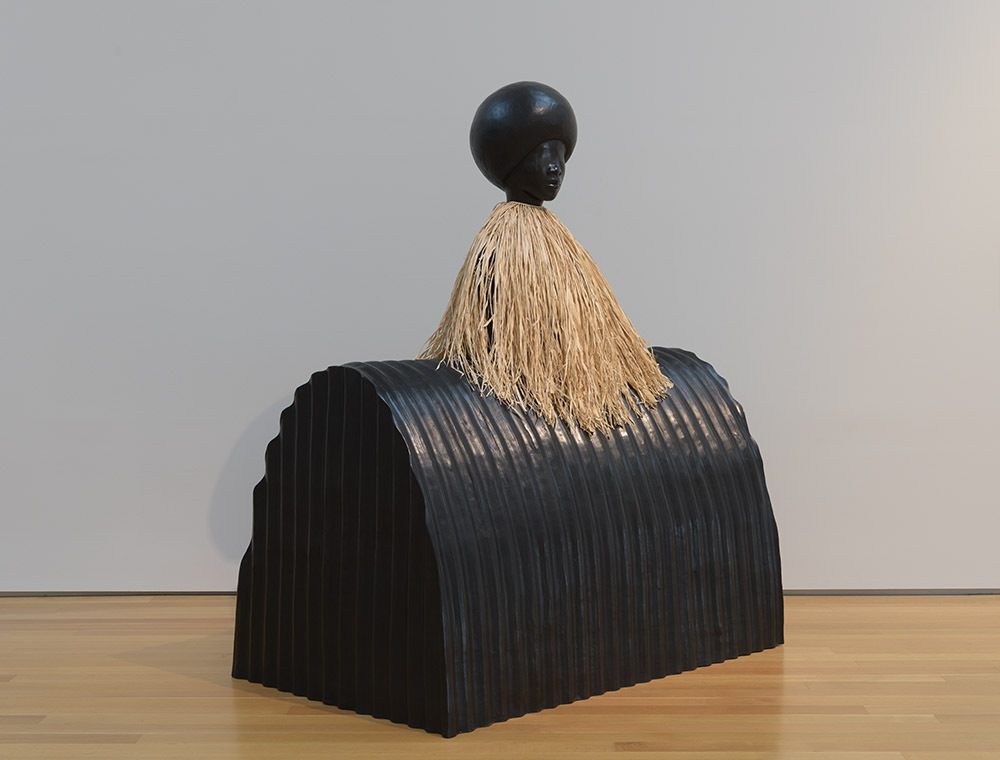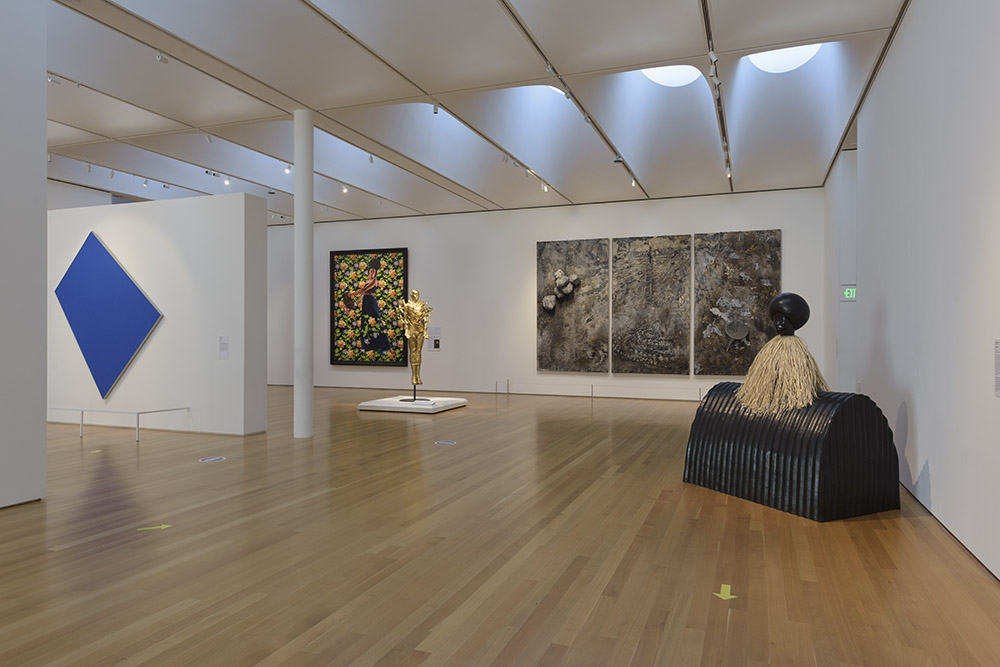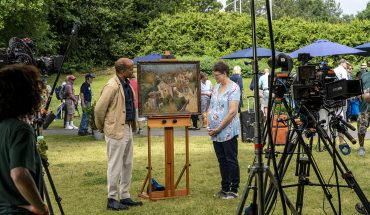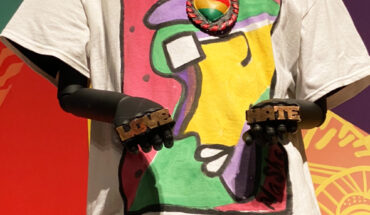This timely acquisition for the North Carolina Art Museum has a surprising link to local history.
by Hampton Williams Hoffer | photography by Karin Malinofski, courtesy the NCMA

In the first bay to the right of the info desk at the North Carolina Museum of Art, beyond a small room of paintings, is a large space where Simone Leigh’s Corrugated stands. It’s positioned in dialogue with other specific works: Mickalene Thomas’s triptych painting, Three Graces, serves as a backdrop, and Corrugated is mirrored by pieces from Black artists, including Amy Sherald’s Miss Everything (Unsuppressed Deliverance) and Kehinde Wiley’s Judith and Holofrenes, along with another sculpture, Michael Richards’ Tar Baby vs. St. Sebastian.
“[Corrugated] is displayed at an angle, such that if you’re walking past, you can catch a glimpse of her and become curious,” says NCMA director Valerie Hillings. Art changes with its context, she says, with the conversations it holds with its surroundings. “It really invites you in to contemplate portraiture, and how we represent individuals and groups of people, what we see and don’t see,” says Hillings.
Leigh’s work often depicts Black female bodies with industrial building materials. Corrugated employs a sealed pipe coated in alloyed bronze beneath the torso of a woman posed ceremoniously, her Afro distinct, her expression indecipherable. A raffia skirt, which plays into the stereotypical depictions of Africans throughout history, is fastened firmly around her neck. Standing at about six feet tall by six feet wide, her presence is larger than life. “I love the way she celebrates Black women with beauty and mystery,” says Hillings.
Corrugated is a jackpot for the NCMA: a wonder of modern art, sculpted by an artist who has exploded in popularity and acclaim. Leigh received the 2018 Hugo Boss Prize along with a solo show at the Guggenheim, and has made history as the first Black woman chosen to represent the U.S. at the Venice Biennale in 2022. The acquisition, a gift of Thomas S. Kenan, III, arrived in Raleigh in August, just before the museum’s reopening.
It felt timely, after a summer of civil unrest and dialogue around representation of Black artists.

But the museum and its curators emphasize that they have been working for more than a decade to diversify its collection in the realms of medium and gender, to amplify Black voices.
“We got miraculously lucky,” says Linda Dougherty, NCMA’s chief curator and curator of contemporary art. “We were looking for someone whose work would withstand the test of time, but we needed to acquire the piece before it was out of our price range.”
Beyond its significance to the broader social and political climate of the country, Leigh’s work is relevant to North Carolina. The Brooklyn-based daughter of Jamaican missionaries, Leigh has worked in ceramics for more than 25 years, with an interest in African pottery, delving into the experiences and histories of Black women. Many of her pieces converge women’s heads with objects like pitchers, in the tradition of African-American face jugs, which Leigh says “fuse the black body with a tool.” Many such face jugs, made by slaves in the mid-1800s, come from North Carolina.
Their purposes, likely both practical and spiritual, included a form of self-portraiture for slaves, a piece of visual worth, a protest to their utter loss of autonomy. The legacy of these face jugs, so essential to the North Carolina pottery tradition, lives in the female figure in Corrugated.
With bronze and raffia, Leigh has conceived an ethereal sculpture of a woman who, notably, has no eyes. The absence of eyes, a signature of Leigh’s work, creates an abstraction that allows the woman in Corrugated to remain anonymous.
“It gives her a certain power that you can’t see her,” Dougherty says. We can only imagine who she is, or perhaps more accurately, what she is: a circumstance, a sensation, an experience.
This article originally appeared in the January 2021 issue of WALTER magazine.



